Pilatus planes are a series of high-performance aircraft designed for versatility and reliability. Pilatus planes incorporate advanced avionics, aerodynamic efficiency, and robust construction. These aircraft serve in both civilian and military roles, showcasing adaptability and precision engineering. Pilatus planes exhibit attributes like range, payload capacity, engine type, and seating configuration. Explore available options to buy a Pilatus plane that aligns with specific operational requirements.
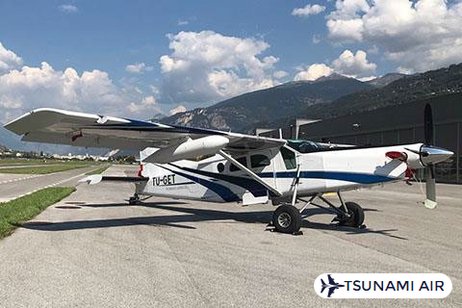
USD $1,995,000
Single EngineReg Number
XT-ADV
Total Time
1744 hrs
Location
Burkina Faso
Year
2015
Seller: Côme Charron
Phone: +352 691 744 022
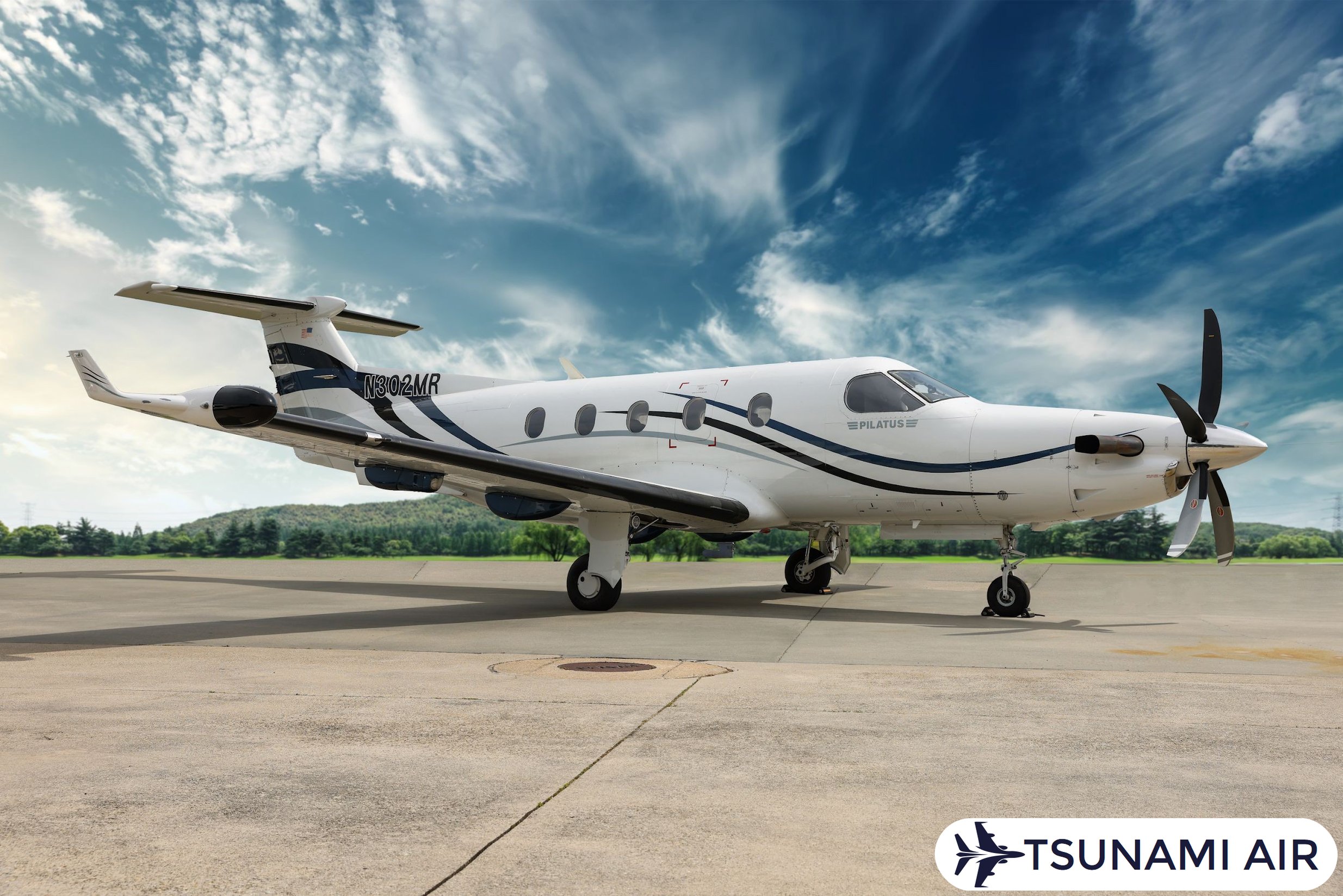
USD $N/A
TurbopropReg Number
N302MR
Total Time
9,077 hrs
Location
United States
Year
2001
Seller: Piedmont Sales
Phone: +1 (770) 233 7518
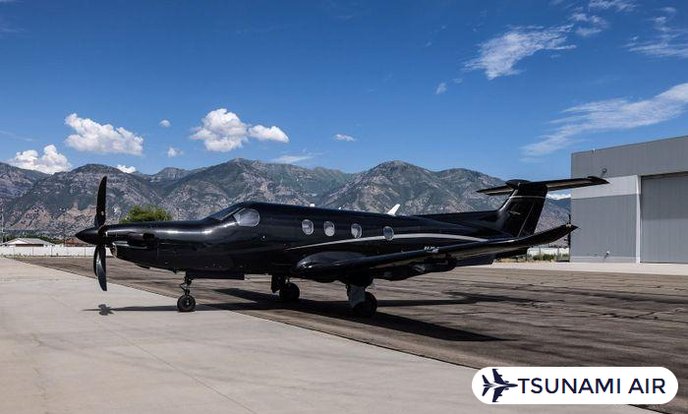
USD $Call for Price
TurbopropReg Number
N521TX
Total Time
2903 hrs
Location
United States
Year
2016
Seller: N/A
Phone: (803) 261-4782 cell
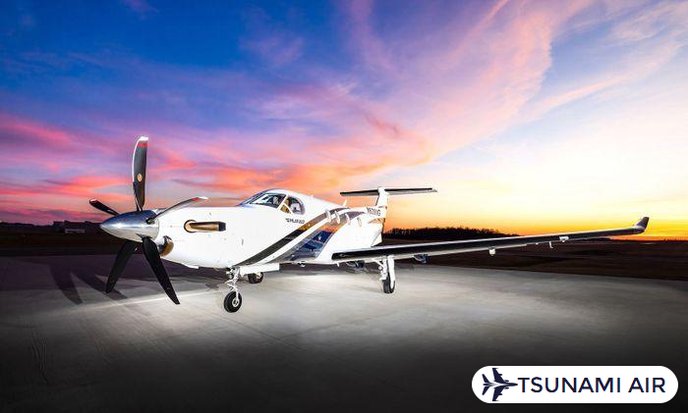
USD $Call for Price
TurbopropReg Number
N638NG
Total Time
2549 hrs
Location
United States
Year
2016
Seller: N/A
Phone: (847) 748-8333
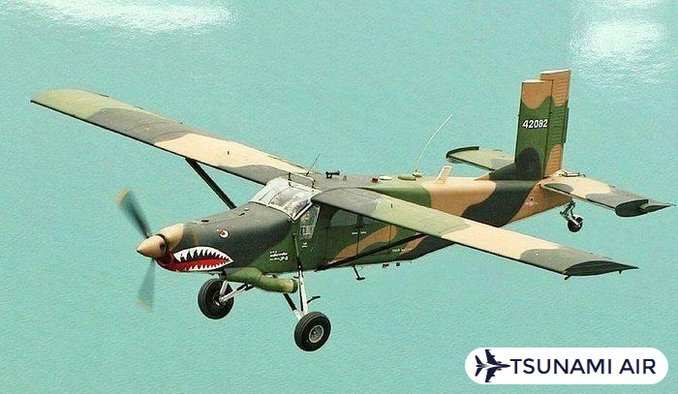
USD $Call for Price
TurbopropReg Number
N12345
Total Time
N/A hrs
Location
United States
Year
1975
Seller: PC6-AU23 Spares, LLC
Phone: (914) 204-0400
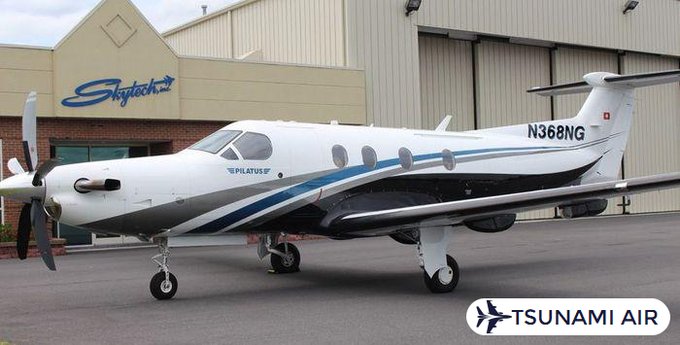
USD $Call for Price
TurbopropReg Number
N368NG
Total Time
3075 hrs
Location
United States
Year
2012
Seller: N/A
Phone: (410) 574-4144
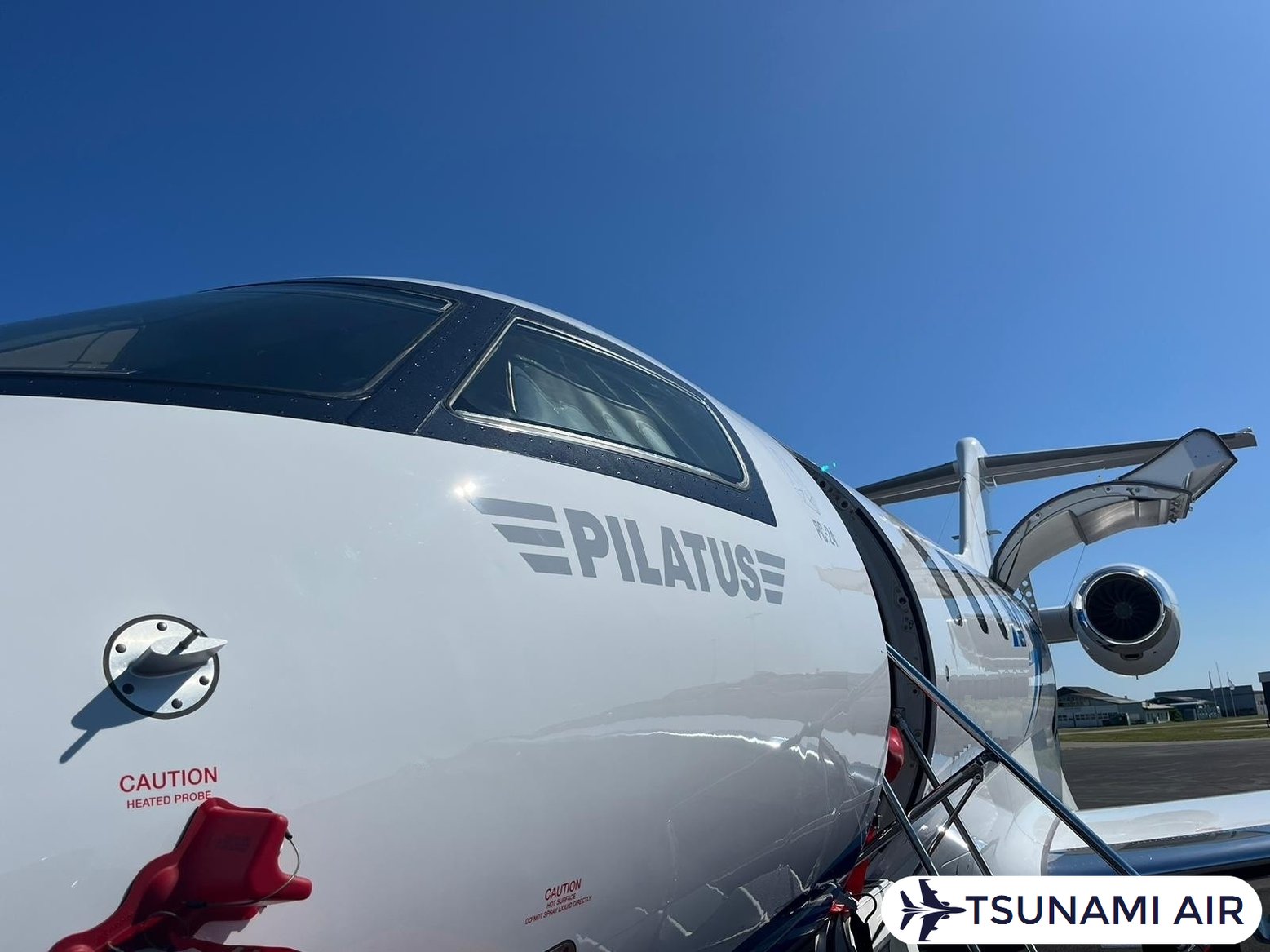
USD $N/A
JetReg Number
-
Total Time
211 hrs
Location
Portugal
Year
2023
Seller: Dmitry Osit
Phone: +371-29 14 56 72
Pilatus is a Swiss aircraft manufacturer known for producing versatile, high-quality turboprop models with innovative STOL capabilities. Pilatus Aircraft Ltd. is located in Stans, Switzerland. Pilatus specializes in developing, producing, and selling versatile fixed-wing aircraft. The PC-12, a single turboprop-engine business and utility aircraft introduced by Pilatus in 1989, has sold around 1,800 units by 2021. Pilatus aircraft are flown worldwide and stand out for innovation and adaptability.
Pilatus Aircraft Ltd. has developed several models that highlight its expertise in aviation. The PC-21 turboprop trainer stands out for its advanced training capabilities and jet-like performance, making it a preferred choice for military pilot training programs worldwide. Pilatus aircraft innovation is evident in the PC-24 light jet, which combines business-class comfort with exceptional short-field performance. The PC-24 operates from runways as short as 800 meters (2625 feet) and unprepared surfaces, expanding access to remote airports. The PC-12 single-engine turboprop exemplifies PC-12 reliability and versatility, serving roles in business travel, cargo transport, and medical evacuation. Over 1,800 units of the PC-12 have been delivered since its introduction in 1994.
The legacy of Pilatus aircraft engineering is rooted in precision and adaptability. Pilatus Aircraft Ltd. maintains a reputation for innovation in STOL capabilities, enabling operations in challenging environments. Swiss heritage underpins the company’s commitment to quality and durability, traits visible in every Pilatus airplane. The PC-6 Porter, introduced in 1959, set the foundation for the brand’s rugged utility aircraft. Pilatus aircraft manufacturer continues to refine its designs, assuring each model meets diverse mission requirements.
Pilatus planes are utilized globally across military, commercial, and private sectors. The versatility of the PC-12 makes it ideal for executive transport, regional flights, and humanitarian missions. Military trainers like the PC-21 enhance pilot readiness with state-of-the-art avionics and aerodynamic efficiency. The PC-24 business jet broadens operational flexibility, appealing to corporate clients seeking efficiency and luxury. Pilatus aircraft adapt seamlessly to demanding tasks, including cargo delivery and medevac operations.
Manufacturing excellence defines Pilatus Aircraft Ltd., with over 2,500 employees dedicated to producing high-quality aircraft. Pilatus’ cost reflects the advanced technology and materials used in each plane. Customer trust in the brand stems from decades of delivering reliable and versatile models. Pilatus team members uphold strict production standards, assuring every Pilatus plane adheres to rigorous quality benchmarks. Pilatus Aircraft Ltd. remains a leader in both turboprop and business jet markets, maintaining a competitive edge through continuous improvement and innovation.
The types of planes Pilatus manufactures include turboprop, jet, and piston aircraft. Pilatus produces the PC-12 turboprop, PC-24 jet, and PC-6 Porter STOL aircraft. Pilatus manufactures military trainers like the PC-7 MKX and PC-21.
The types of planes that Pilatus manufactures are listed below.
The Pilatus PC-12 turboprop stands out as a versatile single-engine turboprop aircraft. Pilatus aircraft designed the PC-12 to serve multiple roles, including corporate transport, cargo hauling, and regional airline operations. The PC-12 turboprop operates from short and unpaved runways, making it ideal for remote areas. Powered by a Pratt & Whitney Canada PT6A-67P engine, the PC-12 achieves a maximum cruise speed of 290 knots and a range of up to 1,803 nautical miles. Pilatus has delivered over 1,400 PC-12s, highlighting its popularity in both civilian and military sectors.
Military trainer aircraft form a significant part of Pilatus aircraft's portfolio. The PC-21 military trainer is a single-engine turboprop designed for advanced pilot training. Equipped with modern avionics and a robust engine, the PC-21 enhances safety features and handling capabilities. Air forces worldwide use the PC-21 trainer aircraft for basic and advanced flight training programs. Pilatus aircraft developed the PC-21 to meet the rigorous demands of military aviation training.
The Pilatus PC-24 light jet combines the advantages of turboprops and traditional jets. Pilatus jets like the PC-24 feature two Williams FJ44-4A engines, each providing 15 kN of thrust. The PC-24 achieves a maximum cruise speed of 440 knots and a range of 2,000 nautical miles. Pilatus designed the PC-24 business jet with a large cargo door and a spacious cabin, catering to business and medical transport roles. Pilatus planes like the PC-24 operate effectively from short and rough runways, boosting their utility in challenging environments.
The PC-6 Porter represents the legacy of Pilatus aircraft in producing rugged STOL aircraft. Pilatus Porter models are single-engine turboprops known for their short takeoff and landing capabilities. The PC-6 serves utility roles like cargo transport and medical evacuation. Pilatus aircraft designed the Porter to operate in remote areas with unprepared landing strips. Historical importance and continued relevance define the PC-6 Porter as a reliable and durable aircraft in specialized operations.
The features of the Pilatus aircrafts include versatile designs, advanced avionics, and high performance. The PC-12 offers a service ceiling of 30,000 feet (9,144 meters), a range of 1,803 nautical miles (3,339 kilometers), and a cabin capacity optimized for utility. The PC-24 provides twin engines, a maximum cruise speed of 440 knots, and a spacious cabin with customizable luxury interiors. Both models emphasize efficiency and safety.
The features of the Pilatus aircrafts are outlined below.
The performance metrics of the Pilatus PC-12 and PC-24 underscore their operational excellence. The PC-12 achieves a maximum cruise speed of 290 knots (537 kilometers per hour), a range of 1,830 nautical miles (3,389 kilometers), and a service ceiling of 30,000 feet (9,144 meters), emphasizing pilatus PC-12 performance. The PC-24 reaches speeds of up to 440 knots (814.88 kilometers per hour) and operates at altitudes of 45,000 feet (13,716 meters), highlighting pilatus PC-24 speed and versatility. Both aircraft optimize efficiency for diverse missions, with the PC-12 excelling in fuel economy and low operating costs while maintaining efficiency.
Versatility defines the Pilatus aircraft line, in the PC-12 and PC-24 models. The PC-12 adapts seamlessly to roles including cargo transport, medical evacuation, and executive travel, showcasing versatility. The PC-24 performs landings on unpaved runways and offers short-field capabilities. The PC-24’s cabin features customizable interiors, providing luxury accommodations for private and corporate use. The PC-9 complements this adaptability by serving in both military and civilian training programs.
Advanced avionics and technology enhance the operational capabilities of the PC-24 and PC-9. The PC-24 incorporates synthetic vision and autothrottle systems, aligning with pilatus aircraft’s innovation goals. Large touchscreen displays in the Advanced Cockpit Environment refine situational awareness, allowing safer flights across all pilatus aircraft models. The PC-9 integrates modern avionics which combine to deliver precision and reliability in demanding aviation environments.
Safety, durability, and agility remain central to the design of the PC-7 and PC-9. The PC-7 demonstrates aerobatic flight capabilities and withstands high-stress training exercises, reflecting durability. Consistent performance in various conditions validates reliability. The PC-9 emphasizes safety with advanced maneuverability and climb rates. Both aircraft serve extensively in pilot training programs, affirming their status as versatile airplanes designed for rigorous operational demands.
The specifications of the Pilatus planes include the PC-12 with a maximum takeoff weight (MTOW) of 10,450 lb (4,740 kg) and a range of up to 1,803 nm (3,339 km), while the PC-24 features a MTOW of 17,750 lb (8,052 kg), a range of 2,000 nm (3,704 km), and 2 Williams FJ44-4A engines providing 3,000 lb (1,361 kg) thrust each. Both aircraft are capable of IFR operations and meet NBAA standards.
The specifications of the Pilatus planes are given in the table below.
Model | Engine Type | Maximum Takeoff Weight (MTOW) | Range | Cruise Speed | Payload Capacity | Takeoff Distance | Exterior Dimensions | Service Ceiling |
Pilatus PC-12 | Pratt & Whitney Canada PT6A-67P Turboprop (1,200 shp) | 10,450 lb (4,740 kg) | 1,803 nm (3,339 km) | 290 knots | 2,257 lbs (1,024 kg) Useful Payload: 2,236 lbs (1,014 kg) | 1,475 ft (450 m) | Length: 47 ft (14.35 m) 3 in (7.62 cm), Wingspan: 53 ft 3 in (16.2 m), Height: 14 ft 0 in (4.3 m) | Not explicitly stated |
Pilatus PC-24 | 2 Williams FJ44-4A Turbofans 3,400 lbs thrust (15.12 kN) each | 17,750 lb (8,052 kg) | 2,000 nm (3,704 km) | Mach 0.80 | 1,100 lbs (499 kg) | 2,690 ft (820 m) | Not specified | Not specified |
Pilatus PC-6 Porter | Pratt & Whitney Canada PT6A-27 Turboprop (680 shp) | Not specified | 630 nm (1,166.7 km) | 130 knots (240.8 km/h) | 3,000 lbs (1,360.8 kg) | 790 ft (241 m) | Not specified | Not specified |
Pilatus PC-7 Turbo Trainer | Pratt & Whitney Canada PT6A-25A Turboprop (550 shp) | Not specified | 500 nm | 300 knots | Not specified | Not specified | Not specified | 25,000 ft (7,620 m) Rate of Climb: 1,000 ft (304.8 m) per minute |
The Pilatus PC-12 engine type is a Pratt & Whitney Canada PT6A-67P turboprop producing 1,200 shp, enabling a cruise speed of up to 290 knots and a maximum range of 1,845 nautical miles. Pilatus PC-12 payload capacity reaches 2,257 lbs (1,024 kg), with a useful payload of 2,236 lbs (1,014 kg) when fully fueled. Pilatus PC-12 takeoff distance measures 1,475 feet (450 meters), while exterior dimensions include a length of 47 ft 3 in (14.4 meters), a wingspan of 53 ft 3 in (16.2 meters), and a height of 14 ft 0 in (4.3 meters).
The Pilatus PC-24 engine type consists of two Williams FJ44-4A turbofans producing 3,400 lbs (15.12 kN) of thrust each, achieving a cruise speed of Mach 0.80 and a range of 2,000 nautical miles (3,704 km). Pilatus PC-24 payload capacity supports up to 1,100 lbs (499 kg), with a takeoff distance of 2,690 feet (820 meters) under standard conditions.
The Pilatus PC-6 Porter engine type is a Pratt & Whitney Canada PT6A-27 turboprop delivering 680 shp (507 kW), boosting its short-field performance with a takeoff distance of around 790 feet (241 meters). Pilatus PC-6 Porter cruise speed reaches 130 knots (240.8 kilometers per hour), with a range of 630 nautical miles (1,166.7 kilometers) and a payload capacity of 3,000 lbs (1,360.8 kilograms).
Pilatus PC-7 Turbo Trainer engine type is a Pratt & Whitney Canada PT6A-25A turboprop producing 550 shp, achieving a max speed of 300 knots and a range of 500 nautical miles. Pilatus PC-7 Turbo Trainer service ceiling extends to 25,000 feet (7,620 meters), with a rate of climb of 1,000 feet (304.8 meters) per minute.
Pilatus PC-12 and PC-24 excel in range and payload capacity, making them ideal for business and utility roles. Pilatus PC-6 Porter demonstrates superior short-field capabilities, suitable for cargo operations in remote areas. Pilatus PC-7 Turbo Trainer serves as a reliable military trainer, combining speed and endurance for pilot training missions.
The engine configuration of the Pilatus aircrafts is a single-engine turboprop setup, powered by variants of the Pratt & Whitney Canada PT6 engine. The PT6A-67B and PT6A-67P engines are primary options, delivering 1,200 shp for different variants.
The PC-12, a single-engine turboprop aircraft, utilizes Pratt & Whitney Canada PT6A engines, with the PT6A-67B powering earlier variants and the PT6A-67P boosting performance in the PC-12 NG model. The PC-12 NGX introduces the PT6E-67XP engine, delivering 890 kW (1,200 shp) for better efficiency and climb rates. The PC-6 Porter, a single-engine turboprop, employs PT6A engines specialized for short takeoff and landing operations. The PC-24, a twin-engine business jet, uses Williams FJ44-4A turbofan engines, each producing 3,420 pounds (15.24 kilonewtons) of thrust. Pilatus integrates these configurations to align with the operational roles of each aircraft.
Single-engine turboprop designs, namely the PC-12 and PC-6, position the engine on the nose of the airframe for balanced weight distribution. The PC-12 employs a constant-speed, fully-feathering reversible propeller driven by its turboprop engine. Twin-engine turbofan propulsion in the PC-24 ensures boosted speed and range, meeting the demands of business jet operations. Historical configurations included piston engines in earlier models, but modern designs prioritize turboprop and turbofan technologies for efficiency and versatility.
Engine integration in Pilatus aircraft involves precise coordination with avionics, fuel, and propulsion systems. The PT6A engines in the PC-12 series feature robust design architecture, enabling seamless interaction with advanced cockpit systems. Fuel delivery systems optimize power output while maintaining reliability. In the PC-24, twin turbofan engines integrate with digital avionics for precise thrust management. Manufacturer Pilatus ensures all systems work cohesively to enhance performance metrics like cruise speed and range.
The PT6A-67B engine delivers 1,200 shp, while the PT6A-67P offers increased power for the PC-12 NG variant. The PT6E-67XP in the PC-12 NGX incorporates technological advancements for better efficiency. The PC-24’s Williams FJ44-4A engines produce 3,420 pounds (15.25 kilonewtons) of thrust each, achieving a maximum cruise speed of Mach 0.82 (986 kilometers per hour).
Yes, Pilatus planes are fuel-efficient. Pilatus planes exhibit impressive fuel efficiency compared to similar-sized jets. Their turboprop engines consume less fuel than traditional jet engines. The PC-12 demonstrates a low fuel burn rate of 66 gallons (249.8 liters) per hour. The PC-12 cruises at a speed of around 300 mph (482.8032 km/h) while maintaining this fuel efficiency. Fuel efficiency allows the PC-12 to achieve excellent range and endurance, contributing to its reputation for operational efficiency.
The Pilatus PC-12 demonstrates a fuel burn rate of 66 gallons (249.8 liters) per hour, while the PC-12 NG variant reduces consumption to around 63 gallons (238.5 liters) per hour. The PC-12 NGX increases fuel consumption to about 75 gallons (283.9 liters) per hour, reflecting its performance capabilities. The PC-24, powered by two Williams FJ44-4A engines, achieves optimized fuel efficiency. Specific fuel consumption rates for the PC-24 remain undisclosed, but its range of 2,350 nautical miles underscores its operational efficiency. Variations in fuel economy across models balance performance metrics like speed, range, and payload capacity.
Fuel efficiency in aviation relies on measurable metrics like fuel burn rate per hour, range capabilities, and environmental impact. The Pilatus PC-12 achieves a range of over 1,560 nautical miles (2,889 kilometers) while consuming 66 gallons per hour (249.8 liters per hour), showcasing competitive fuel economy within its class. Aviation fuel quality directly influences engine performance, with Jet-A fuel exhibiting an energy content of 18.4 megajoules per kilogram. High-quality fuel supports efficient operations in both the PC-12 and PC-24. Comparisons to industry benchmarks reveal that Pilatus aircraft maintain lower operating costs due to their fuel-efficient designs and advanced engine technologies.
Flight phases, payload weight, weather conditions, and cruising altitudes affect fuel consumption rates. The Pilatus PC-12 operates effectively from rugged environments and unprepared airstrips, boosting its operational efficiency under diverse conditions. The PC-24 benefits from higher cruise speeds and aerodynamic design, achieving efficient long-distance operations. Pilatus emphasizes low-drag features and optimal engine performance to maximize fuel economy across varying operational demands.
Pilatus planes demonstrate superior fuel efficiency compared to competitors in their respective categories. The PC-12 achieves a balance of range, cabin size, and speed, consuming less fuel than traditional jets. The PC-24's fuel consumption remains competitive despite its jet propulsion system, which consumes more fuel than turboprops. Pilatus aircraft integrate efficient engines and aerodynamic designs to deliver outstanding fuel performance. These attributes position Pilatus airplanes as cost-effective solutions for business and personal transport while adhering to sustainable aviation practices.
The different Pilatus aircraft models include the PC-12, PC-21, PC-7 MKX, PC-24, and PC-6/B2-H1 Turbo Porter. Pilatus aircraft serve as trainers, transporters, and business jets.
The different Pilatus aircraft models are given in the table below.
Aircraft Model | Type | Engine | Max Speed | Range | Key Features |
PC-6/B2-H1 Turbo Porter | Utility Turboprop | Pratt & Whitney PT6A | 140 knots | 870 nautical miles | STOL capability, cargo, medevac, parachuting |
PC-7 MKX | Trainer | Turboprop | 225 knots | 730 nautical miles | Single-engine, basic military training |
PC-9 | Advanced Trainer | Turboprop | 335 knots | 850 nautical miles | Improved avionics, bridge to fighter jet roles |
PC-12 NGX | Turboprop | Pratt & Whitney PT6E-67XP | 290 knots | Up to 1,803 nautical miles | Executive transport, medical evacuation, cargo |
PC-21 | Advanced Trainer | Turboprop | 370 knots | 950 nautical miles | Prepares pilots for fourth-/fifth-gen fighters |
PC-24 | Business Jet | Williams FJ44-4A | Mach 0.82 | Up to 2,000 nautical miles | Short/unpaved runway ops, spacious cabin, executive transport |
The Pilatus PC-6 Porter utility aircraft stands out for its STOL capability, enabling operations in remote and challenging environments. The PC-6 Porter performs roles including cargo transport, medical evacuation, and parachuting missions. The aircraft operates from short, unprepared airstrips, making it indispensable for civilian and military transport. The Pilatus PC-7 trainer aircraft serves as a single-engine turboprop trainer designed for basic flight training. Military forces worldwide rely on the PC-7 for its robust design and cost-effective maintenance. The single-engine configuration reduces operational costs while providing reliability.
The Pilatus PC-9 advanced trainer builds on the PC-7, offering refined performance and advanced avionics. Military forces use the PC-9 for bridging basic training and preparing pilots for fighter jet roles. The Pilatus PC-12 turboprop aircraft achieves a range of up to 1,803 nautical miles and a max speed of 290 knots. The PC-12 serves executive transport, medical evacuation, and cargo missions due to its versatility and efficiency. The PC-12 NGX, an upgraded version introduced in 2019, features a Pratt & Whitney PT6E-67XP engine and modern avionics. The Pilatus PC-21 advanced trainer prepares pilots for fourth- and fifth-generation fighter jets. The PC-21 combines avionics with robust performance, catering to modern military and civilian training programs.
The Pilatus PC-24 business jet marks the company’s first entry into private and business aviation. The PC-24 achieves a range of up to 2,000 nautical miles and operates from short and unpaved runways, mirroring the capabilities of the PC-6 Porter. The aircraft offers a spacious cabin and accommodates up to four passengers, making it ideal for executive transport. The PC-24 achieves a max speed of Mach 0.82 and spans 17 meters (55.77 feet) in wingspan.
Pilatus aircraft models serve diverse sectors, including military training, commercial utility, and executive aviation. The PC-7, PC-9, and PC-21 cater to military training needs, while the PC-6 Porter and PC-12 excel in utility and transport roles. The PC-24 business jet addresses the demands of private and corporate aviation.
Pilatus planes are reliable, as evidenced by the PC-12's exceptional safety record and the durable engineering of the PC-12 and PC-24 models. The Pilatus PC-12 demonstrates an accident rate of just per million flight hours, lower than the average for single-engine turboprops. Over 1,700 PC-12s have been delivered, accumulating more than 7 million flight hours, showcasing its proven reliability. The Pratt & Whitney PT6A-67 engine, with a mean time between failures exceeding 10,000 hours, powers the PC-12 and ensures consistent performance. Advanced avionics and robust airframe design enhance the safety and durability of both the PC-12 and PC-24 models. Pilatus aircraft comply with stringent FAA and EASA regulations, guaranteeing adherence to global safety standards.
Reliability in Pilatus aircraft encompasses flight performance, mechanical durability, and safety. The Pratt & Whitney PT6A-67 engine powers the PC-12, contributing to its reliability with a mean time between failures exceeding 10,000 hours. Pilatus aircraft engineering ensures robust airframe design and advanced avionics, boosting both PC-12 and PC-24 models. Maintenance frequency remains low due to accessible systems, with most components reachable via doors or hatches. Longevity is evident as over 1,700 PC-12s have accumulated more than 7 million flight hours, maintaining strong residual values.
Perspectives from pilots, maintenance crews, operators, and regulatory bodies reinforce the reliability of Pilatus aircraft. Pilatus PC-12 performance includes short-field capabilities and slow takeoff and landing speeds, making it versatile for diverse missions. Maintenance crews appreciate the simplicity of pilatus PC-12 maintenance, reducing downtime and repair costs. Operators value the PC-12’s compliance with FAA and EASA regulations, guaranteeing adherence to global safety standards. Aviation safety reports highlight the PC-12’s accident rate of 0.27 per million flight hours, lower than the average for single-engine turboprops.
Operating conditions like weather, altitude, and mission-specific usage demonstrate the resilience of Pilatus aircraft. Pilatus PC-12 safety records show only 19 fatal accidents since 1994, with no fatalities attributed to engine failure. The PC-12 operates efficiently in known ice conditions, certified by both FAA and EASA. Long-term durability is backed by stiffened clad aluminum alloy wing skins, assuring structural integrity. Pilatus PC-24 performance metrics include a range of over 2,000 nautical miles and a top speed of 450 knots, suitable for private and corporate use.
Key metrics like failure rates, downtime, and repair costs underscore the reliability of Pilatus planes. The PC-12’s production quality ensures ease of maintenance and spare parts availability, reducing operational disruptions. Pilatus PC-24 operational history reflects safety performance consistent with aviation safety reports. Both models comply with stringent FAA and EASA regulations, affirming their reliability ratings. Over 2,000 PC-12 units delivered worldwide exemplify trust in Pilatus aircraft quality and engineering.
Pilatus planes are worth buying due to their reliability, safety record, and performance. Pilatus aircraft retain value well and have strong market demand. Pilatus planes offer versatility and advanced features like the Garmin G3000 Prime avionics suite. Potential buyers must contemplate maintenance requirements and operational issues.
Private owners, commercial operators, and aviation collectors evaluate Pilatus planes differently based on their priorities. Novice buyers focus on the Pilatus PC-12 due to its operational efficiency and ease of use, while seasoned aviation professionals value the aircraft's versatility and advanced avionics. The Pilatus aircraft’s reputation for quality appeals to those seeking long-term reliability. Pilatus PC-12 performance makes it a popular choice for personal travel, cargo operations, and charter services. The Pilatus PC-7 training suitability and Pilatus PC-6 Porter ruggedness attract specialized buyers including military and remote cargo operators.
The Pilatus PC-12 stands out for its ability to operate from short or unpaved runways, making it ideal for remote locations. Pilatus PC-12 versatility is evident in its large cargo door and spacious cabin, which accommodate both passengers and freight. The Garmin G3000 Prime avionics suite enhances mission flexibility. Pilatus aircraft innovation ensures compliance with modern regulatory standards. Pilatus PC-21 training efficiency and Pilatus PC-7 durability make these models suitable for flight training programs. Used aircraft market availability reflects strong demand for versatile and efficient planes like the PC-12.
Pilatus planes incur higher upfront costs, with the base price of a new Pilatus PC-12 NGX starting at $6.25 million. Operational expenses remain low due to fuel efficiency and reduced maintenance needs. Pilatus PC-12 operational efficiency reduces costs per hour to $939.83. Resale value retention remains strong, with some PC-12 models holding up to 100% of their original purchase price. Pilatus aircraft quality and Pilatus aircraft reputation assure consistent demand in the used aircraft market. Buyers prioritize long-term financial benefits over initial investment.
External factors like market trends and regulatory environments influence decisions about purchasing Pilatus planes. Technological advancements in avionics enhance desirability compared to alternatives. Pilatus PC-6 Porter STOL capability allows operation in challenging environments, increasing its appeal. Pilatus PC-21 agility and modernity meet advanced training requirements. Resale value depreciation occurs minimally due to durable materials and robust construction. Pilatus PC-7 cost-efficiency supports its position in military and civilian training programs. Used aircraft market trends indicate stable pricing and high demand for reliable models.
The ideal buyer for a Pilatus aircraft values Swiss quality, performance, versatility, and residual value, whether they are individual owners, businesses, first-time buyers, or current owners looking to upgrade. First-time buyers make up around 25% of PC-12 purchases, reflecting the aircraft's appeal to newcomers. Corporate flight operations prioritize the PC-12 for its operational efficiency and cost-effectiveness. Government aviation agencies rely on the PC-12’s durability and mission readiness for diverse operations. Charter operators favor the aircraft for its versatility and passenger comfort during short to medium-haul flights. Private owners value the PC-12’s luxury, personalization options, and flexibility for varied missions.
Corporate flight operations prioritize the PC-12 for its operational efficiency, cost-effectiveness, and reliability. The aircraft’s ability to operate from short and unimproved runways enhances flexibility for corporate missions. Government aviation agencies rely on the PC-12’s durability, mission readiness, and safety features. The robust design ensures consistent performance in challenging environments, allowing diverse government operations. Both corporate and government buyers benefit from the aircraft’s low operating costs and high availability, making it a practical choice for demanding missions.
Charter operators favor the PC-12 for its fleet versatility, passenger comfort, and operational performance. The cabin layout provides ample space, refining the experience for travelers during short to medium-haul flights. Private aircraft owners value the PC-12’s luxury, personalization options, and flexibility. Customizable configurations allow owners to tailor the aircraft to their specific needs, while its ability to access smaller airfields expands operational opportunities. These traits make the PC-12 a top choice for both commercial charter services and private ownership.
Air ambulance providers depend on the PC-12 for rapid response capabilities, safety, and mission versatility. The aircraft’s short takeoff and landing performance ensures quick access to remote areas during emergencies. Flight training organizations appreciate the PC-12’s handling characteristics, durability, and safety record. The stable flight dynamics and robust construction support effective pilot training programs. Both sectors benefit from the aircraft’s adaptability and reliability, which align with their unique operational requirements.
Aviation leasing companies are attracted to the PC-12 due to its residual value, market demand, and maintenance compliance. The aircraft retains over 90% of its value after five years, allowing strong returns for leasing firms. Consistent demand across multiple sectors reduces downtime and enhances remarketing opportunities. Low maintenance costs and adherence to regulatory standards further refine profitability for leasing operations. The PC-12’s combination of financial and operational advantages makes it a preferred asset in the aviation leasing industry.
The price of Pilatus planes varies based on model, condition, and customization. New PC-12 NGX costs $6.2 million, while used models range from $2.5 million to $5.75 million. The PC-24 model costs between $9.3 million and $14 million depending on age and features. Prices reflect market values as of Summer 2024.
Pre-owned Pilatus PC-12 models have acquisition costs starting at $2.0 million for older or less-equipped versions, while the 2020 model is priced at $5.75 million. The 2008 Pilatus PC-12 model holds a price point of $3.95 million, and the 2010 PC-12/47E NG model is listed at $4,195,000. Average pre-owned PC-12 NG models are valued around $4,500,000, reflecting consistent demand. New Pilatus PC-12 NGX models for 2024 are priced at $6.2 million, with executive configurations increasing costs to $5.369 million. Customization impacts the overall investment in a Pilatus PC-12.
The Pilatus PC-24 private jet has market values ranging from $9.3 million for older models to $14 million for newer or highly featured variants. A typical PC-24 private jet is priced around $13 million, positioning it as a premium option in the business aviation sector. Pre-owned PC-24 models fall between $9 million and $11 million, with an average cost of $10.5 million. Operating costs for the PC-24 are estimated at $2,630 per flight hour, reinforcing its appeal despite the higher acquisition price.
Age, condition, and additional features influence the market value of both Pilatus PC-12 and PC-24 models. Older turboprop Pilatus aircraft like the 2008 PC-12 are priced around $3.95 million, while newer models like the 2020 PC-12 reach $5.75 million. Executive-equipped versions exceed standard pricing, with some costing up to $5.369 million. Strong residual values enhance the appeal of Pilatus planes price, assuring sustained interest in both new and pre-owned markets.
Typical maintenance costs for owning a Pilatus plane vary based on the model and usage. Annual fixed costs range from $189,050 to $499,053, while total variable costs include fuel and maintenance, with the Pilatus PC-6 costing $388,008 annually for 450 hours at $6 per gallon.
Annual maintenance costs for the Pilatus PC-12 range from $50,000 to $100,000, depending on the aircraft's age, flight hours, and required inspections. These costs exclude major repairs or overhauls. Fixed costs for the PC-12 fall between $250,000 and $300,000 annually, covering insurance, hangar storage, and crew expenses. Variable costs, including fuel and per-hour maintenance, average $750 to $1,000 per flight hour. Factors like operational intensity, geographic location, and regulatory compliance directly influence these expenses.
Annual operating budgets for maintenance are estimated at $47,619 for lower usage and $95,238 for higher usage. These figures incorporate routine inspections, parts replacement, and labor but exclude major repairs. The estimates account for variable costs like fuel, which total $126,000 annually for typical flight hours. Landing and parking fees for the PC-12 range from $15,000 to $30,000, further contributing to the overall budget.
Another maintenance cost estimate totals at $356,600 for lower usage and $713,200 for higher usage. This variance reflects differences in usage patterns, service providers, and aircraft customization. Engine overhaul reserves for the PC-12 range from $38,000 to $77,000 annually, while per-hour maintenance costs fluctuate between $75,000 and $90,000 based on flight hours. Unexpected expenses, namely avionics upgrades or unscheduled repairs, further impact long-term budgets.
Operational intensity plays a part in cost variability, with higher flight hours increasing wear on components and necessitating more frequent maintenance. Geographic location affects hangar fees and labor rates, while regulatory compliance requires periodic updates to avionics or safety systems. Pilatus' CrystalCare program offers predictable pricing for long-term maintenance, reducing uncertainty in budgeting. Owners operating the PC-12 for 200–400 hours annually align with the $50,000–$100,000 maintenance range, excluding major repairs.
Pilatus planes are cost-effective for charter operations due to lower operating costs and fuel efficiency. Pilatus PC-12, a turboprop aircraft, offers private travel flexibility and is suitable for shorter trips or remote area access. Cost-effectiveness aligns well with certain private charter needs but does not suit larger commercial or cargo operations.
Pilatus planes demonstrate cost-effectiveness through a combination of acquisition costs, ongoing operating expenses, and resale value. The Pilatus PC-12 achieves lower maintenance costs due to its single-engine turboprop design, reducing complexity and parts replacement frequency. Annual operating costs for the PC-12 range between $600,000 and $800,000, including depreciation, insurance, hangar storage, and fuel consumption. Fuel efficiency contributes to aircraft operating costs, with the PC-12 burning 70 gallons (265 liters) of Jet-A fuel per hour at a cost of $420 per hour. Resale value remains strong due to slower depreciation rates for used models, refining long-term affordability for private jet charter operations.
Private charter operators benefit from the suitability of Pilatus planes for small regional or business-focused charter flights. The Pilatus PC-12 achieves a range of 1,800 nautical miles, making it ideal for medium-distance private charter services. Operational flexibility allows access to remote areas and smaller airports, addressing diverse charter operators' fleet requirements. Limitations arise for long-haul or large-scale operations where higher speeds and larger capacities are necessary. The Pilatus PC-24 complements the PC-12 by offering jet performance with manageable operating costs, enabling efficient route planning for jet charter services.
Comparative analysis reveals Pilatus aircraft as cost-effective alternatives to similar turboprops and light jets. The Pilatus PC-12 consumes less fuel compared to jet engines, achieving cost savings in fuel expenses. Hourly charter rates for the PC-12 range from $2,000 to $3,500, depending on location and demand. Maintenance costs remain lower than those of light jets, with annual maintenance expenses ranging from $50,000 to $100,000. Pilatus PC-24 fuel efficiency aligns with industry standards for light jets while offering superior operational flexibility through access to shorter runways and smaller airports.
Operational assumptions for Pilatus planes include flight hours, maintenance schedules, and environmental conditions. Operating the PC-12 for 300 hours per year reduces total annual costs by $330,000 through charter revenue generation. Co-ownership models further optimize aircraft operating costs for private charter companies. Flight hours directly impact fuel consumption and maintenance needs, with per-hour costs for the PC-12 ranging from $800 to $1,200. Environmental factors like weather conditions influence operational efficiency for remote area access and short-field performance. Pilatus planes maintain profitability in charter operations through strategic planning and cost management.
Pilatus provides comprehensive support to its customers through a global network of service centers, 24/7 customer support channels, preventive-maintenance and repair services, technical guidance via apps, robust spare parts supply, and dedicated after-sales service warranty and customer-care programs. Pilatus ensures fast turnaround times with a 24/7/365 customer support system accessible via phone hotlines, web portals, and the Pilatus Customer Service app. A global network of over 50 certified service centers uses genuine parts to deliver top-tier preventive-maintenance and repair services. Customers receive technical guidance through direct communication channels, including AOG (Aircraft on Ground) assistance hotlines. Special programs like CrystalCare bundle maintenance coverage at no extra cost, boosting after-sales service warranty and customer-care frameworks. Pilatus maintains a robust spare parts supply chain, assuring rapid distribution and minimizing aircraft downtime.
Pilatus provides technical support for maintenance, repairs, and troubleshooting through its global service centers’ infrastructure. Customer service for inquiries, account management, and assistance is available 24/7 via phone hotlines, email, and the Pilatus Customer Service app. Operational support includes pilot training programs instruction and certification pathways offered in collaboration with partners like Honeywell Aerospace Training TV. Advisory services for fleet upgrades and service planning guarantee optimal aircraft performance and longevity. These components of Pilatus' comprehensive support cater to airlines and commercial operators, private owners, aviation enthusiasts, flight schools, training organizations, and government and military clients.
Financial solutions like leasing options enhance customer support availability while minimizing ownership costs. Technical expertise and specialized maintenance services repair capabilities are delivered by over 50 certified service centers using genuine Pilatus parts. A robust spare parts supply inventory ensures rapid distribution to reduce aircraft downtime. Logistical and administrative assistance further supports customers by streamlining processes and amplifying efficiency. Pilatus services include direct communication channels like phone hotlines, email, and in-person consultations for immediate technical support guidance.
Digital platforms including web portals, apps, and live chat provide real-time access to service centers location details and ICAO airport codes. On-site field support and repair services guarantee hands-on expertise for intricate issues. Training programs, workshops and operational guidance reinforce pilatus aircraft reliability and innovation. The Pilatus Customer Support App enhances customer support responsiveness by offering instant access to AOG assistance hotlines and detailed service center maps. Maintenance services preventive-maintenance and repair frameworks maintain high standards of after-sales service warranty and customer-care.
The pros and cons of buying a used Pilatus plane are presented in the table below.
Pros | Cons |
Retains up to 80% of initial value after 5 years | High purchase price reflects Swiss build quality and advanced engineering |
PC-12 achieves 2,123 miles (3,416 km) range with minimal fuel consumption | Insurance and hangar costs contribute significantly to overall ownership expenses |
Minimized expenses due to efficient designs | Flight hours increase maintenance requirements; adherence to scheduled overhauls is critical |
Strong resale value retention due to Swiss build quality and durable materials like aluminum alloy wing skin | Wear and tear from previous usage may impact older models or those with higher flight hours |
Transferable warranties enhance buyer confidence in pre-owned models | Cabin comfort addresses noise concerns but lags behind private jets in luxury features |
PC-12 offers 2,123 miles (3,416 km) | Older variants may have outdated interiors compared to modern turboprops or jets |
Capable of landing on unpaved runways; suitable for civilian and military applications | Demand drives pricing fluctuations globally, including regions like South Africa |
Advanced navigation features in newer variants | Accident-free records and diligent upkeep influence market value and demand |
Minimal downtime due to accessible systems simplifying maintenance tasks | Pre-purchase inspections are essential to evaluate structural integrity and airworthiness certification compliance |
Durable construction supports extreme conditions, especially for the PC-6 model | Operator profile and accident history directly affect long-term value and resale premiums |
The pros of buying a used Pilatus plane include cost savings through depreciation, strong resale value, fuel efficiency, and versatile performance, while the cons involve high initial purchase prices, ongoing maintenance and insurance costs, potential wear and tear from previous usage, and lack of luxury compared to jets. Maintenance tasks simplify due to accessible systems, reducing downtime for repairs. High initial purchase prices reflect the Swiss build quality and durable aluminum alloy wing skin. Pilatus aircraft reputation stems from Swiss build quality and durable materials like aluminum alloy wing skin. Used Pilatus aircraft cost efficiency arises from fuel-efficient designs, with the PC-12 minimizing expenses related to fuel consumption. Pilatus PC-6 durability supports extreme conditions, while Pilatus PC-6 operational versatility suits both civilian and military applications. Pilatus PC-6 efficiency benefits from rugged construction and adaptable performance.
Aircraft condition structural integrity requires thorough pre-purchase inspections evaluating wear and serviceability. Aircraft condition wear impacts older models, those with higher flight hours usage. Aircraft condition age necessitates diligent upkeep to maintain airworthiness certification validity. Ownership history and previous usage influences long-term value, with accident-free records commanding higher premiums. Ownership history accident history directly affects resale value market value. Ownership history operator profile plays a key part in determining demand for used Pilatus aircraft. Flight hours increase maintenance needs, highlighting the significance of adherence to scheduled overhauls. Airworthiness certification compliance ensures regulatory standards are met, safeguarding operations.
Market trends demand drives fluctuations in pre-owned Pilatus aircraft pricing, in regions like South Africa. Market pricing reflects global supply and demand dynamics. Cost of ownership includes hangar, insurance, and fuel expenses. Maintenance cost remains competitive relative to capabilities for the PC-12. Insurance contributes to overall expenses. Pilatus PC-12 modern avionics enhance functionality, incorporating advanced navigation features. Pilatus PC-12 cabin comfort addresses noise concerns in newer variants. Pilatus PC-12 fuel efficiency sets benchmarks for turboprops. Aviation regulations compliance ensures safety and reliability, backed by comprehensive maintenance records completeness. Pre-purchase inspection thoroughness evaluates diagnostic results, assuring structural integrity and airworthiness.